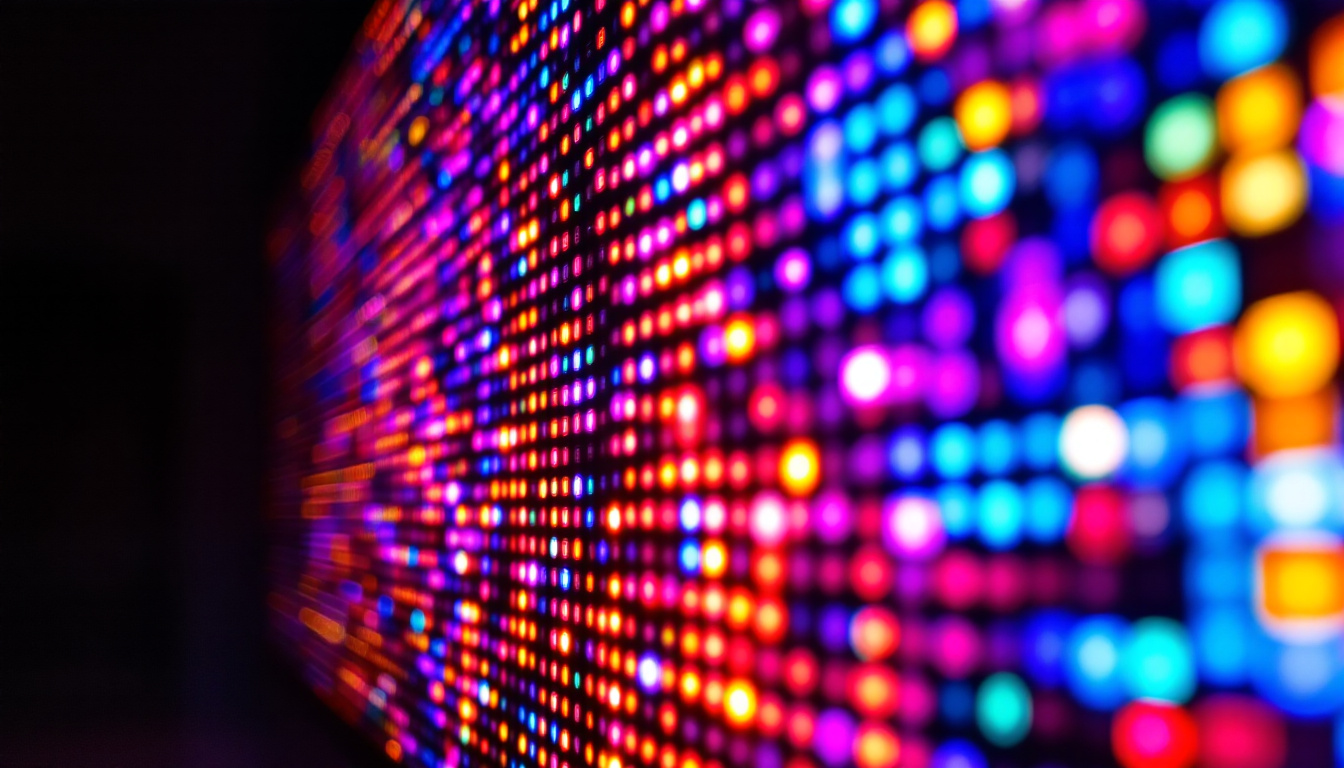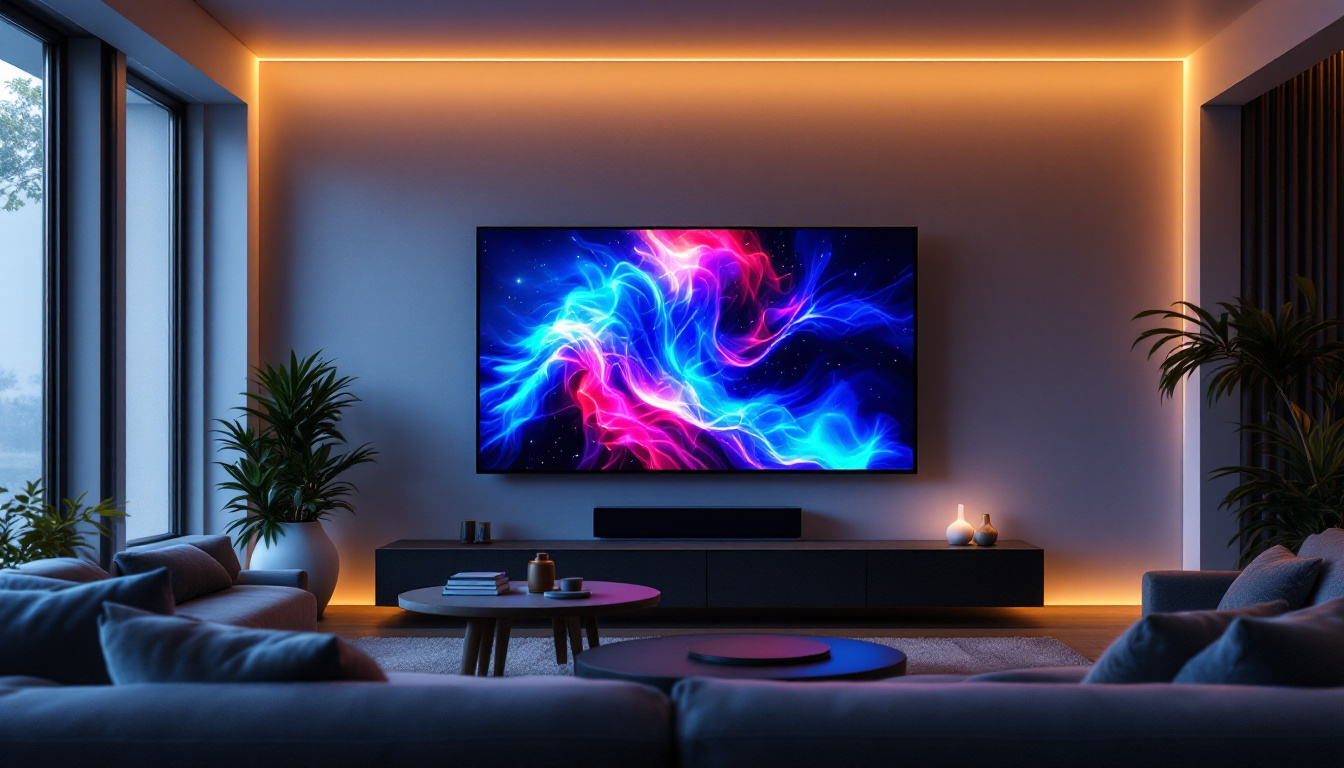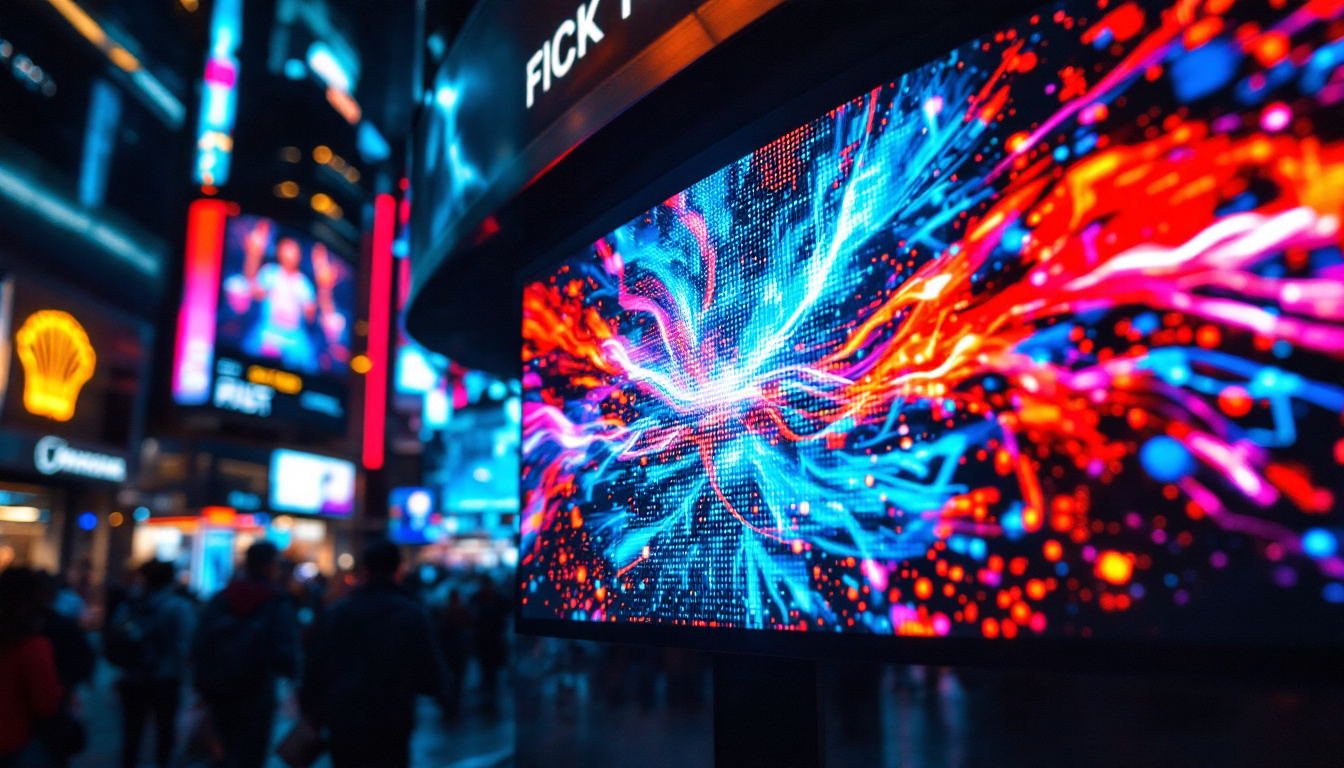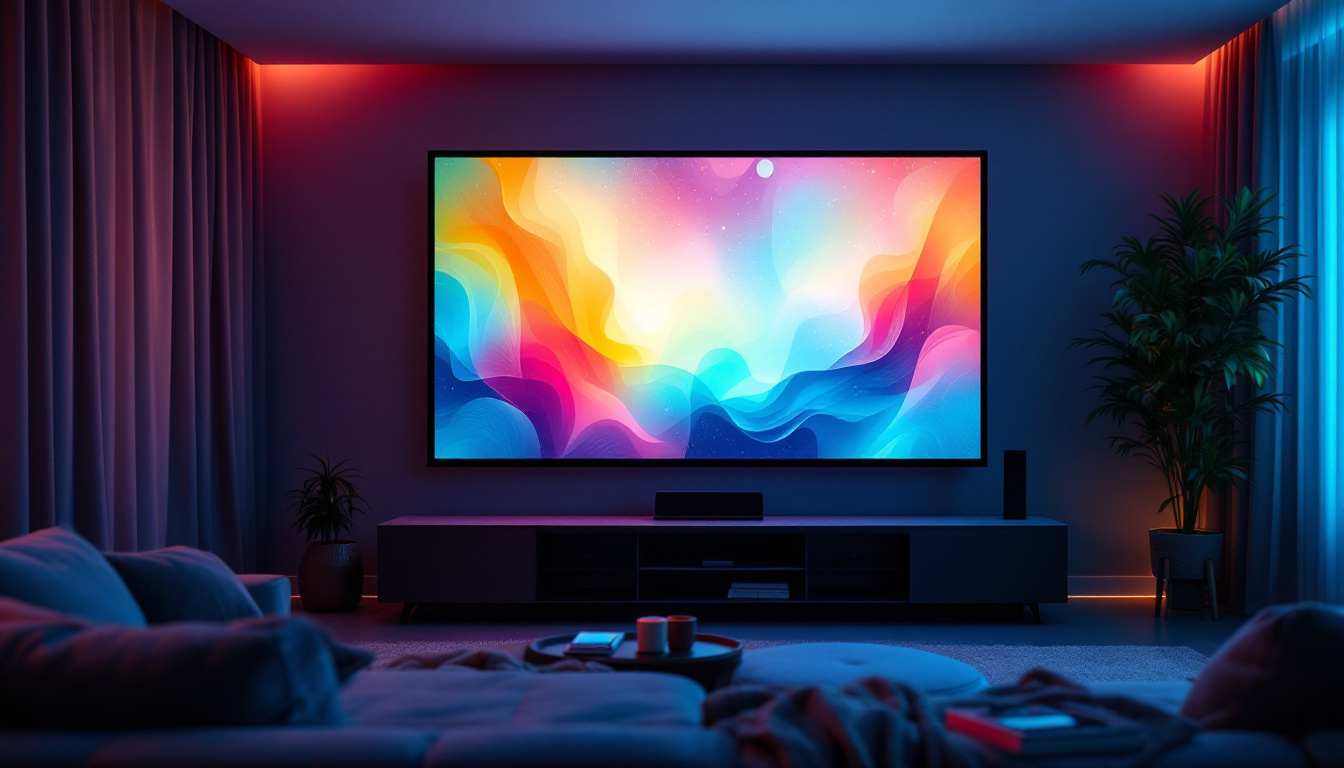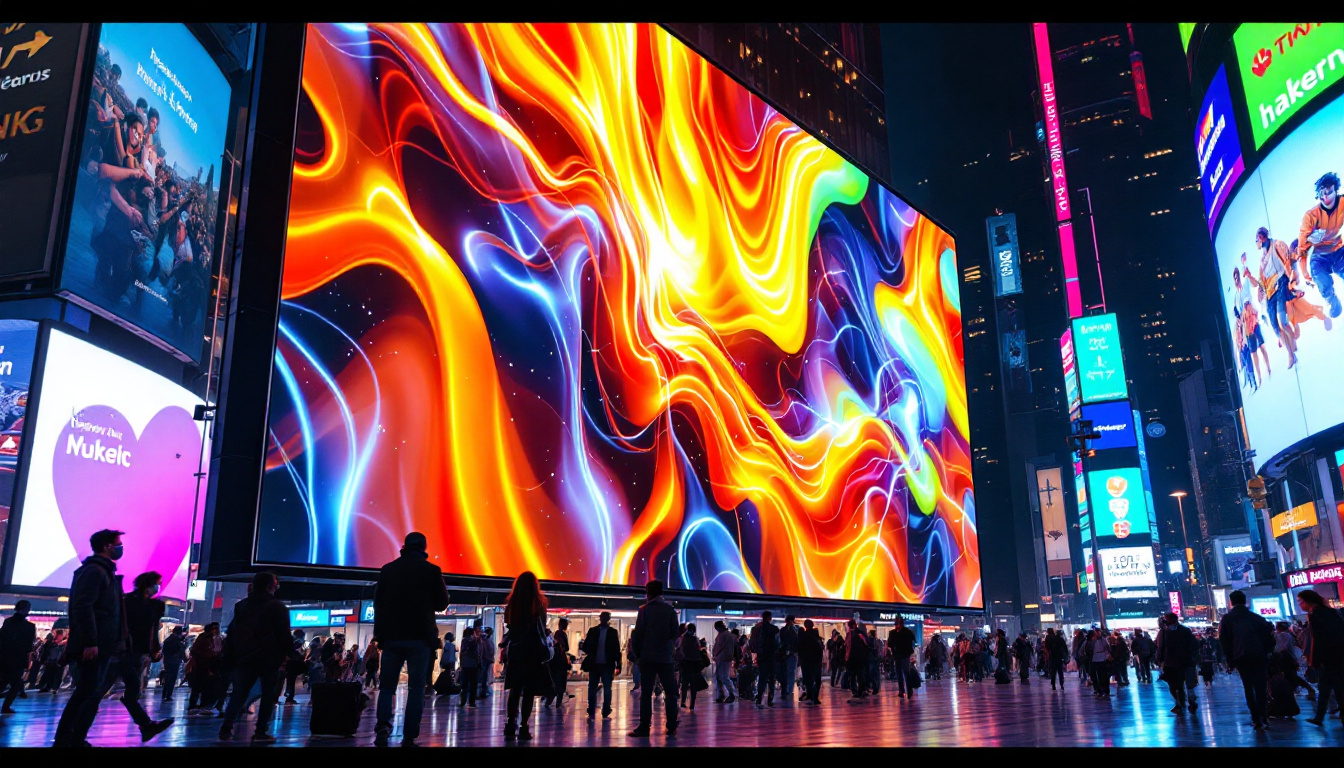Big LCD Display: LED Display Explained
In the ever-evolving world of technology, displays have become an integral part of our daily lives. From televisions to smartphones, the clarity and quality of visual content are paramount. Among the various types of displays available, LCD (Liquid Crystal Display) and LED (Light Emitting Diode) technologies stand out for their exceptional performance and versatility. This article delves into the nuances of big LCD displays and explains how LED technology enhances these displays.
Understanding LCD Technology
LCD technology has revolutionized the way we view images and videos. It utilizes liquid crystals sandwiched between two layers of glass or plastic, which modulate light to produce images. This technology has become the foundation for many display devices, including televisions, computer monitors, and smartphones. The evolution of LCD technology has not only improved the quality of visual displays but has also significantly impacted the design and functionality of electronic devices, making them sleeker and more user-friendly.
How LCD Works
The operation of an LCD is based on the manipulation of light. When an electric current passes through the liquid crystals, they align in a way that either blocks or allows light to pass through. This process creates the images we see on the screen. The backlight, typically composed of fluorescent lamps or LEDs, illuminates the display, providing the necessary brightness for the visual content. The precision of this light modulation is crucial, as it determines the overall image quality, including brightness, contrast, and color accuracy, which are essential for an immersive viewing experience.
One of the key advantages of LCD technology is its ability to produce sharp images with high resolution. This makes it ideal for applications where clarity is essential, such as graphic design and gaming. Additionally, LCDs are generally thinner and lighter than their CRT (Cathode Ray Tube) predecessors, making them more suitable for modern, space-saving designs. The energy efficiency of LCDs also plays a significant role in their popularity, as they consume less power compared to older technologies, contributing to lower electricity bills and a reduced environmental footprint.
Types of LCD Displays
There are several types of LCD displays, each with unique characteristics. The most common types include:
- Twisted Nematic (TN): Known for their fast response times, TN panels are popular for gaming due to their low latency. However, they often suffer from poorer color reproduction and viewing angles.
- In-Plane Switching (IPS): IPS panels provide better color accuracy and wider viewing angles compared to TN panels. They are favored for professional use, such as photo editing and graphic design.
- Vertical Alignment (VA): VA panels offer excellent contrast ratios and deeper blacks, making them suitable for movie watching. However, they may have slower response times compared to TN and IPS panels.
In addition to these common types, there are also specialized LCD technologies designed for specific applications. For instance, High Dynamic Range (HDR) LCDs enhance contrast and color range, providing a more vivid picture that closely resembles real-life visuals. Furthermore, some manufacturers have developed curved LCD screens, which aim to provide a more immersive viewing experience by wrapping the display around the viewer’s field of vision. As technology continues to advance, the development of LCD displays is likely to incorporate even more innovative features, enhancing user experience across various platforms.
The Role of LED Technology
While LCD technology has its strengths, the introduction of LED technology has further enhanced display performance. LED, which stands for Light Emitting Diode, is a semiconductor device that emits light when an electric current passes through it. In the context of displays, LED technology is primarily used for backlighting LCD screens. This innovation has revolutionized the way we experience visual content, providing sharper images and a more immersive viewing experience.
LED Backlighting Explained
LED backlighting can be categorized into two main types: edge-lit and full-array. Edge-lit LED displays have LEDs positioned along the edges of the screen, which then diffuse light across the display. This design allows for thinner screens but may result in uneven brightness and poorer contrast in certain areas. Despite these limitations, edge-lit displays are popular for their sleek designs and lightweight profiles, making them ideal for modern, minimalist aesthetics in home and office environments.
On the other hand, full-array LED displays feature a grid of LEDs behind the entire screen. This allows for more precise control over brightness and contrast, as different areas of the screen can be dimmed or brightened independently. This technology is particularly beneficial for high dynamic range (HDR) content, where bright highlights and deep shadows coexist. The ability to adjust backlighting dynamically not only enhances the overall picture quality but also creates a more lifelike representation of images, drawing viewers deeper into the content they are watching.
Benefits of LED Displays
The integration of LED technology into LCD displays offers several advantages:
- Improved Brightness: LED backlighting provides higher brightness levels compared to traditional fluorescent backlights, making displays more visible in bright environments.
- Energy Efficiency: LED displays consume less power than their fluorescent counterparts, leading to lower energy bills and a reduced environmental impact.
- Better Color Accuracy: LED technology can produce a wider color gamut, resulting in more vibrant and accurate colors.
Additionally, LED displays tend to have a longer lifespan than traditional LCDs, which means less frequent replacements and lower long-term costs. This durability is particularly advantageous in commercial settings, where displays are often used for extended periods. Furthermore, advancements in LED technology have led to the development of OLED (Organic Light Emitting Diode) displays, which take the benefits of LED a step further by allowing each pixel to emit its own light, resulting in even deeper blacks and more stunning visuals. As the technology continues to evolve, we can expect even more enhancements in display quality and energy efficiency, making LED technology a cornerstone of modern visual media.
Big LCD Displays: Applications and Use Cases
Big LCD displays have found their way into various applications, serving both commercial and personal needs. Their versatility and superior image quality make them suitable for a range of environments.
Commercial Use
In commercial settings, big LCD displays are often used for advertising, presentations, and information dissemination. Digital signage has become increasingly popular in retail environments, where large screens can attract customers and showcase products effectively.
Additionally, conference rooms and classrooms benefit from big LCD displays for presentations and collaborative work. The clarity and size of these displays enhance visibility, ensuring that all participants can engage with the content being presented.
Home Entertainment
For home users, big LCD displays have transformed the way people consume media. Large televisions equipped with LED backlighting provide an immersive viewing experience for movies, sports, and gaming. The combination of high resolution and vibrant colors enhances the overall enjoyment of visual content.
Moreover, advancements in smart TV technology have integrated streaming services, allowing users to access a vast library of content directly from their big LCD displays. This convenience has made large screens a central feature in modern living rooms.
Comparing Big LCD Displays with Other Technologies
While big LCD displays are popular, they are not the only option available. Other technologies, such as OLED (Organic Light Emitting Diode) and QLED (Quantum Dot Light Emitting Diode), offer distinct advantages and disadvantages.
OLED Technology
OLED displays operate on a different principle compared to LCDs. Each pixel in an OLED display emits its own light, eliminating the need for backlighting. This results in true blacks and exceptional contrast ratios, making OLED displays particularly appealing for cinematic experiences.
However, OLED technology can be more expensive to produce, leading to higher retail prices. Additionally, issues such as burn-in can affect the longevity of OLED displays, particularly in static image scenarios.
QLED Technology
QLED technology, developed by certain manufacturers, utilizes quantum dots to enhance color and brightness. QLED displays are essentially LCDs with LED backlighting, but the addition of quantum dots allows for improved color accuracy and brightness levels.
While QLED displays can achieve impressive brightness, they still rely on backlighting, which means they may not reach the same level of contrast as OLED displays. However, they offer a more affordable alternative with many of the benefits of OLED technology.
Future Trends in Display Technology
The display technology landscape is continuously evolving, with new innovations on the horizon. As consumer demands for higher resolution and better performance grow, manufacturers are investing in research and development to push the boundaries of what is possible.
8K Resolution
One of the most significant trends is the shift towards 8K resolution. With four times the pixel count of 4K displays, 8K technology promises unparalleled clarity and detail. While content in 8K is still limited, the availability of 8K displays is increasing, making this technology a consideration for future-proofing home entertainment systems.
Flexible and Rollable Displays
Another exciting development is the emergence of flexible and rollable displays. These innovative designs allow for screens that can be bent or rolled up, providing new possibilities for form factors and portability. This technology could lead to more versatile devices that cater to a variety of use cases.
Conclusion
Big LCD displays, enhanced by LED technology, have become a staple in both commercial and residential settings. Their ability to deliver high-quality visuals with vibrant colors and sharp images makes them an excellent choice for a wide range of applications. As technology continues to advance, the future of display technology promises even more exciting developments, ensuring that consumers will always have access to cutting-edge visual experiences.
Whether for entertainment, education, or professional use, understanding the intricacies of LCD and LED technology can help consumers make informed decisions when selecting displays that meet their needs. As the landscape of display technology evolves, staying informed will be key to leveraging the best that modern technology has to offer.
Discover LumenMatrix’s Advanced LED Display Solutions
Ready to experience the ultimate in display technology? LumenMatrix is at the forefront of LED innovation, offering a diverse range of LED display modules designed to bring your visual communication to life. From captivating Indoor LED Wall Displays to dynamic Outdoor LED Wall Displays, and from versatile Vehicle LED Displays to engaging LED Sports Displays, our solutions are crafted to elevate your brand’s presence and create unforgettable visual experiences. Embrace the future of display technology with LumenMatrix and transform the way you connect with your audience. Check out LumenMatrix LED Display Solutions today and see the difference for yourself.

